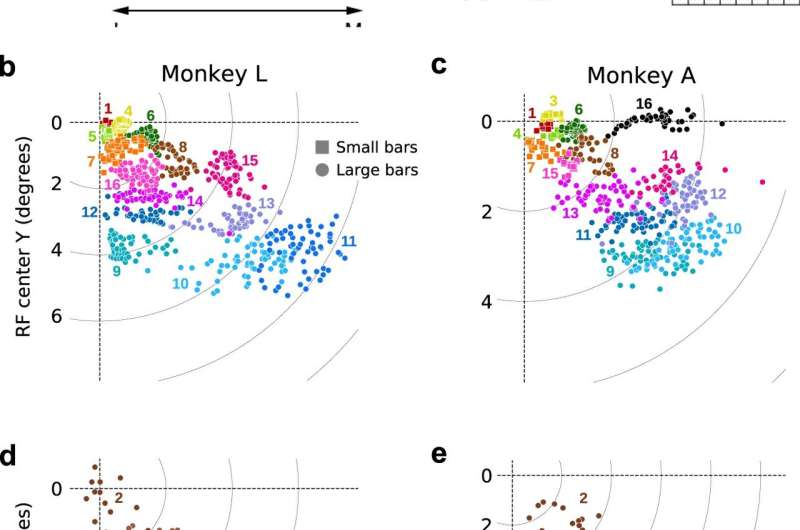Open-access dataset of macaque brain published

Researchers from the Netherlands Institute for Neuroscience (NIN) have published a dataset that was recorded from the visual cortex of monkeys during the resting state. The dataset can be shared with other researchers for analysis, used as teaching material and/or serve as a template for future publications of large electrophysiology datasets, therefore less monkeys are needed for research. The dataset was collected at the NIN and prepared for publication by the NIN and collaborators at Juelich University and Aachen University (Germany).
The dataset consists of electrophysiology data that was recorded from the visual cortex (V1 and V4) of two monkeys, from 1,024 recording sites simultaneously during the resting state, and it also includes supporting datasets obtained while the monkeys performed visual tasks. The data provide a picture of neuronal activity across large regions of the visual cortex at an unprecedented spatial and temporal resolution, with high-density receptive field coverage. The dataset includes data in their 'rawest' form, to enable their broadest use, as well as processed data to facilitate analysis of commonly used neuronal signals.
Spatially and temporally detailed picture
The recordings can be utilized to observe brain waves across larger regions of cortex, offering a spatiotemporally detailed picture of brain activity. '"In this paper, we provide the dataset, describe the raw and processed data formats and data acquisition methods, and indicate how the data can be used to yield new insights into the 'background' activity that influences the processing of visual information in our brain'", says Xing Chen, Senior researcher at the Vision and Cognition lab at the NIN.
Most studies have either examined resting state activity throughout the brain using MRI scans—a non-invasive medical imaging technique—or by recording activity from a small number of implanted electrodes. The Vision & Cognition lab, led by Professor Pieter Roelfsema, carried out recordings from over a thousand chronically implanted electrodes in the visual cortex of non-human primates, yielding a resting state dataset with a high spatial-temporal resolution—a very detailed and accurate observation. '"Part of our dataset has already been used successfully to investigate the neural correlates of brain activity obtained via non-invasive imaging,"' says Chen.
Open access
A Data Descriptor article accompanies the dataset. The article includes a thorough description of the scientific insights that could be obtained from the data, data formats, and methods of data acquisition and processing. Included are sections on Data Records (describing data usage and file formats); Technical Validation (to validate the data for usability and correctness); and Code Availability (describing the scripts used for data collection, processing, and analysis).
'"This dataset allows other scientists to derive new fundamental neuroscientific insights into underlying activity that influences the processing of visual information in our brain,"' says Chen. The dataset has been published under an open-access Creative Commons license for other researchers so that everyone can access the data.
The study is published in the journal Scientific Data.
More information: Xing Chen et al, 1024-channel electrophysiological recordings in macaque V1 and V4 during resting state, Scientific Data (2022). DOI: 10.1038/s41597-022-01180-1


















